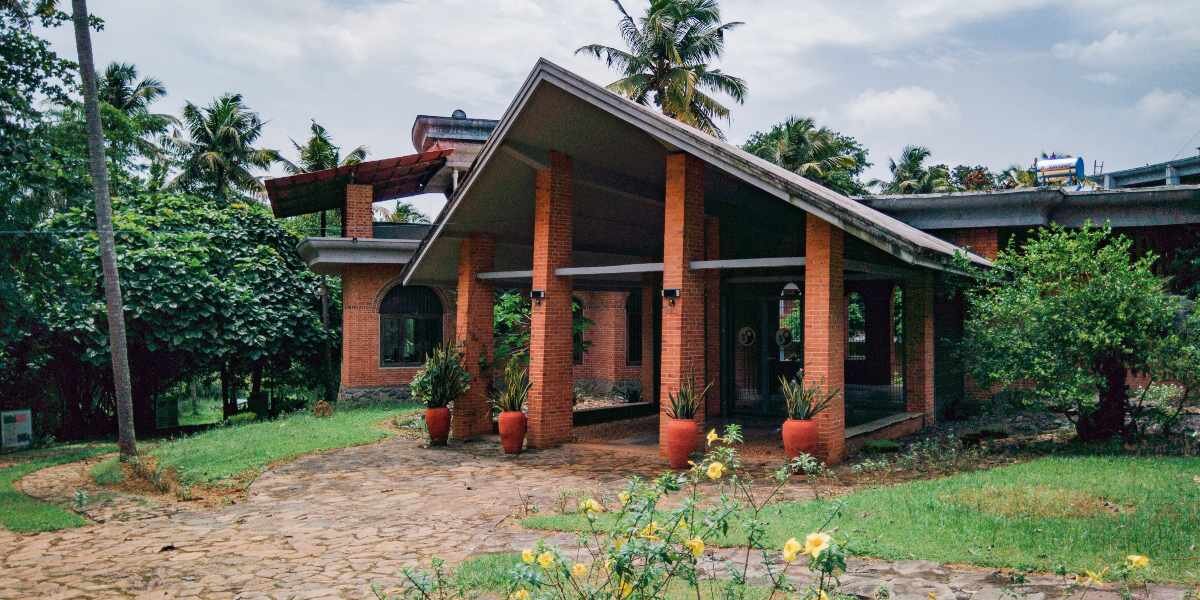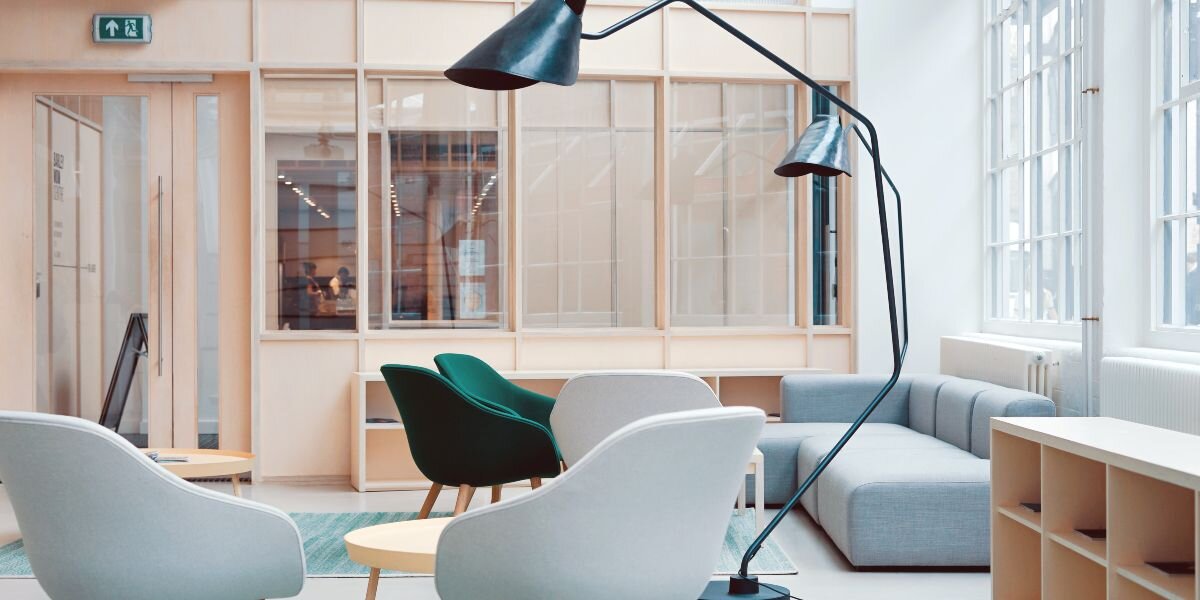Interior Design Environment: The Role of Environmental Sustainability
Are you concerned about your home’s environmental impact or the levels of productivity and creativity in your office?
Maybe it’s time to consider a more eco-friendly interior design in real estate, with concepts such as energy and water efficiency, waste reduction, and recyclable materials implementation - not only for reduced environmental impact but for the positive impact on human health and wellbeing.
Biofilico designs for people, the planet, and your profit! Our actions address human health, environmental sustainability, and financial gain.
As the world becomes increasingly urbanized, our lifestyle conveniences and wishes are increased while access to nature and green spaces decreases. As a result, we have a fundamentally disconnected evolutionary flow, with many problems (mainly diseases) tightly connected to it.
In further text, you will find more information concerning the importance of environment and sustainability and its impact on our lives through interior design and the places we live in.
What is Environmental Sustainability?
When we talk about environmental sustainability, meaning to address all aspects of our lives - we need to include everything, from eco-homes, sourcing our supplies, renewable energy, and environmentally conscious communities to low-impact furniture and clothing.
But what is environmental sustainability?
The meaning of environmental sustainability has many definitions used by green groups, businesses, and even politicians and activists, but the concept and principles of sustainable development were first introduced in 1987 in the “Our Common Future” report, prepared for the World Commission on Environment and Development.
This includes sustainable design principles, which emphasize creating concepts and spaces that reduce environmental impact, use sustainable materials, and consider long-term environmental and socioeconomic development.
Significance of Environmental Sustainability
Environmental sustainability is paramount due to the detrimental impacts individuals can inflict on our surroundings. It necessitates collective care for the flora, fauna, air, and water bodies that constitute our planet’s ecosystem. Minimizing energy consumption through sustainable architecture and interior design practices is crucial for reducing greenhouse gas emissions and promoting energy efficiency.
Preservation of Biodiversity
Environmental sustainability safeguards the rich diversity of life forms and ecosystems, ensuring the continued existence of vital species and habitats.
Protection of Natural Resources
By prioritizing sustainability, we conserve essential resources like water, land, and energy, ensuring their availability for future generations and mitigating the risk of resource depletion. Using sustainable materials, such as furniture made from recycled sources like reclaimed wood and recycled products, plays a crucial role in conserving natural resources.
Mitigation of Climate Change
Environmental sustainability efforts are crucial in combatting climate change by reducing greenhouse gas emissions, promoting renewable energy sources, and implementing carbon-neutral practices.
Promotion of Human Health
A sustainable environment fosters human health and well-being by providing clean air, water, and food, reducing exposure to pollutants, and minimizing the risk of environmental hazards. Sustainable design plays a crucial role in improving indoor air quality through factors like passive heating, cooling, ventilation design, and natural light.
Global Collaboration
Environmental sustainability initiatives occur on various scales, from local community projects to international agreements, highlighting the global commitment to preserving our planet for future generations.
How does Environmental Sustainability Affect Social Responsibility?
The relationship between people and spaces is based on psychological and physical parameters and greatly impacts improving life quality. Targeting social welfare and happiness through environmental sustainability is a measure that results in higher levels of employee creativity, motivation, and well-being.
The most important criterion for saving and healing the planet is the selection of materials used in building and decorating. Every material has its function, so materials used in hospitals and shopping malls should differ due to the sterilization needs. However, selecting materials with the maximum potential to reduce waste is crucial.
Creating durable and timeless spaces is also essential, as it promotes longevity and reduces the need for frequent design changes, aligning with social responsibility.
The embodied energy (energy needed to produce some material) is also important when choosing a sustainable material for a home or public space. Concrete, steel, and plastics are higher in embodied energy than some more natural elements like stone or timber.
Recycling potential is an important factor in the field of waste management. Moreover, the level of emission of toxic gases (in production and use) should be considered an important step to go for more traditional but highly sustainable techniques in construction
Decreasing the amount of global waste leads to the creation of new technology to generate electricity from the plantation
Interior environments are places where all human needs are exposed. They are the most intimate spaces where our physical and physical health is affected by many bad factors we have inflicted upon ourselves.
Environmental Sustainability in Business
Taking the initiative to create a more environmentally conscious company culture through eco-friendly policies is a bold move, even if it starts with eliminating plastic straws and paper to reduce plastic waste.
Developing a corporate environmental responsibility begins on the level of your workforce. It is crucial (especially for young) people to believe in the vision and practice of environmental sustainability, changing their habits in the office, for the mission of sustainability to be carried out accordingly.
Environmental Sustainability and Interior Design Elements
Interior design is a profession that is subject to the context of human needs and the many different levels of satisfaction. The interior space is made to satisfy the needs of security, survival, and achieving higher self-esteem
Recent studies have shown the need for environmental health and sustainability within our living spaces and the obligation for the niche to be included and survive. This is why the practice of interior design elements is considered a context of sustainability. Using natural light in interior design is crucial for improving energy efficiency and reducing dependence on artificial lighting. Larger windows, skylights, and light color schemes can help maximize natural light in design projects.
The environmental development and sustainability principles recognized the links between inequality, poverty, and environmental degradation. Thus, the elements of their improvement were needed to support communities and find a way forward for a fairer world with less environmental damage.
So, the environmental development and sustainability concept met the needs of the present without compromising the ability of future generations to live in a better world.
Environmental sustainability in interior design refers to all the systems and materials integrated into one whole purpose (for example, into healthy building spaces for inhabitation), minimizing negative impacts on the environment and occupants while maximizing the positive health, economic, and social life cycle.
Environmental Sustainability in Interior Design and the Planet
Environmental development and sustainability issues include concerns about whether environmental resources will be protected and maintained for future generations. Limiting consumption of nonrenewable resources, naturally shifting to renewable resources, and avoiding excess pollution damage our health and the earth’s atmosphere.
Sustainable interior design plays a crucial role by creating eco-friendly and environmentally conscious spaces, using low-impact materials, reducing waste, and considering long-term environmental and economic impacts.
The biggest problem now is making an economic decision based on the insight of the long-term consequences and making integrational decisions to target economic and social welfare.
Long-term Health of Ecosystems
Principles of sustainable development protect the long-term productivity and health of the resources that will be used in the future, meeting the economic and social needs.
Making decisions to protect food supplies, farmlands and fishing stocks, species diversity, and ecological structure, we ensure the health of our future generations and the loam of our lands.
Prevention of man-made global warming
Water shortages, extreme weather events, excess temperature, and all the other problems have been predicted for future generations to face because of the deterioration and usage of harmful materials and substances - factors that could make a living in some parts of the world very difficult, if not impossible.
Intergenerational decision making
When making large economic decisions, we should focus on the implications for the future, not just for the present moment. For example, using coal as energy gives a short-term benefit of cheapness, but the pollution weight is immense for future generations.
Renewable resources
Diversifying energy sources from nonrenewable into renewable and sustainable ones that, again, do not rely on non-renewable resources is one of the main concerns that should be met in the future. For example, the most popular solutions are solar and wind power-generating windmills, panels, and skylights.
The willingness to create sustainable environments should be primarily met and fulfilled within workplaces and private home interiors. Improving energy efficiency in interior design is crucial, as it reduces energy consumption related to heating, lighting, and appliances. Interior designers have an essential tool to lead sustainable environments and create a sustainability consciousness.
Interior design elements are major tools in creating long-term environmental sustainability, with elements of natural resources, sustainable fabrication, manufacturing, and installation, all the way up to sustainable use, reuse, recycling, and final disposal


